Winter Landscaping: How to Plant for the Colder Months
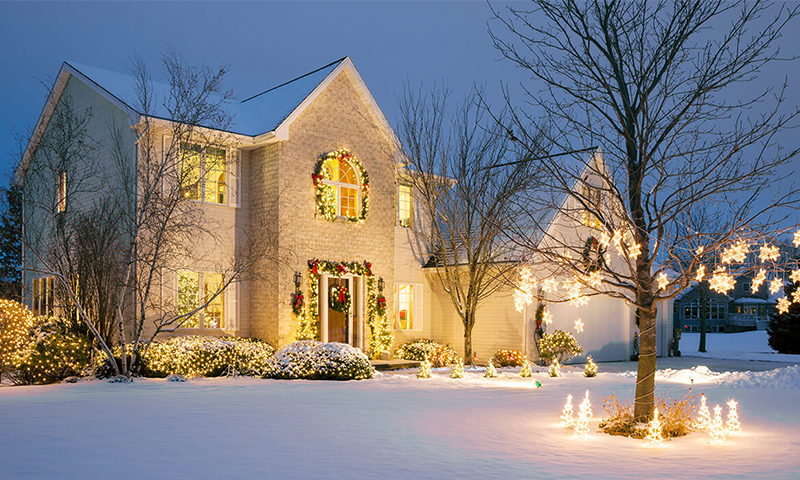
When you think of landscaping, you probably think of lush greenery, brightly-colored blooms, warm weather, and sunny skies. While the temperatures may be lower, there are hundreds of winter garden plants that will brighten up your space, even if they are mostly enjoyed from indoors. Whether it’s your first winter with a yard or you’re a seasoned gardener, these winter landscaping tips and ideas will help your space look beautiful all winter long, while getting a head start for next spring.
Preparing Your Landscape for the Colder Months
Preventative care is crucial in preserving the quality of your landscaping over the winter. These easy tips will save you time and money come spring — and allow you to focus your energy on adding spring and summer color back into your yard with beautiful annuals.
Refresh Your Mulch
A 1.5-2 inch thick layer of mulch will keep your perennials’ roots warm and safe all winter long and will ensure that they bloom again when spring arrives. Plan to mulch on a day when the ground is moist, like the day after a good rain. Applying mulch on top will seal in moisture for the winter. Following our step-by-step guide for mulching will make the most of your investment.
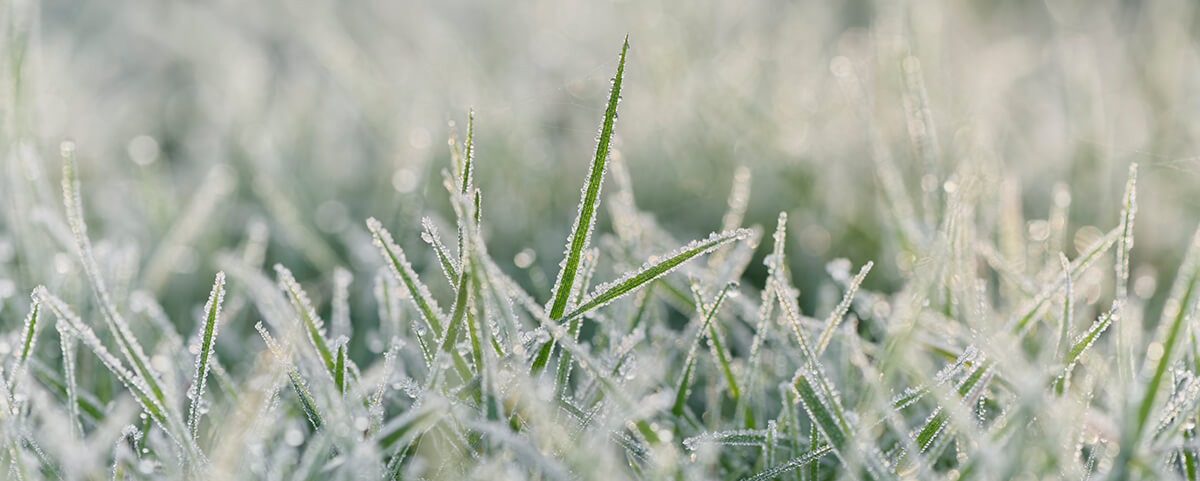
Mow The Lawn One Last Time
Many people call it quits with their lawnmowers come September, but there are a number of benefits to continuing your efforts into the fall. Whenever you mow for the last time, drop your mowing blade slightly for a shorter cut. A shorter lawn will prevent frostbite and snow mold, and will also discourage rodents and pests from building their winter nests too close to your home.
Winterize Your Water Systems
Whether you have a simple garden hose or a complex sprinkler system, ridding it of water before the cold weather sets in will help you avoid a slew of problems. Turning spigots and water sources off and emptying and coiling hoses will prevent freezing and mold. If you have an integrated sprinkler system, you may also need to clean it with compressed air, either yourself or with the help of a professional.
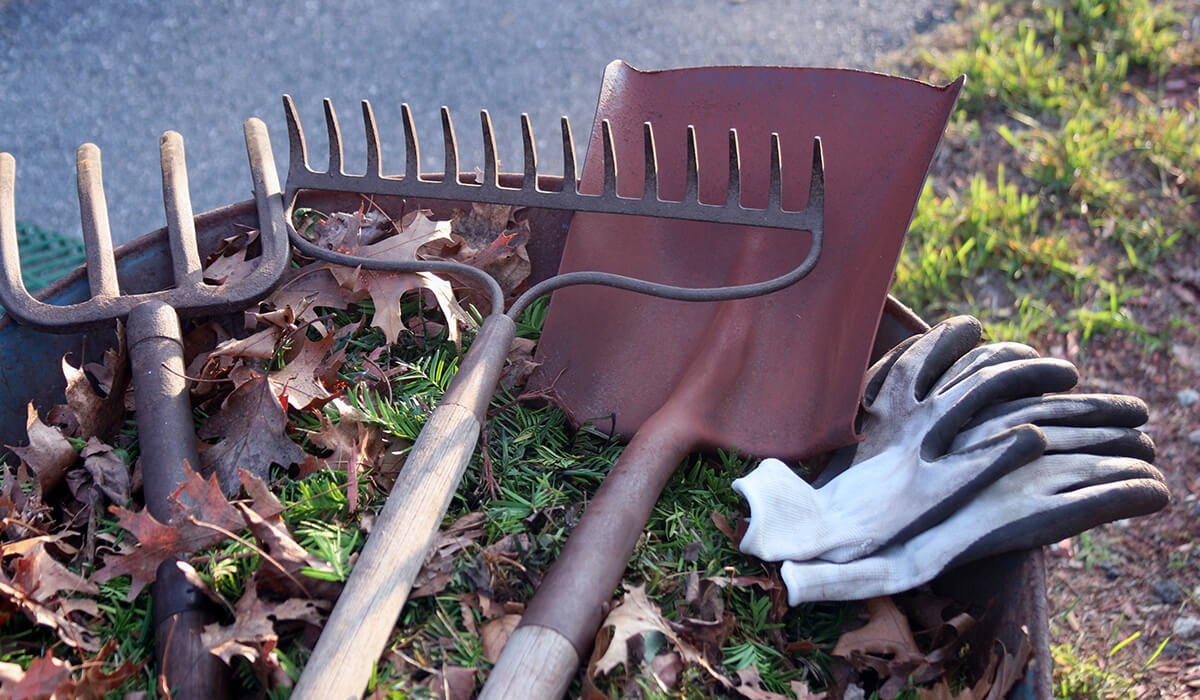
Clean Tools and Empty Fuel
Before you turn off your outdoor water sources for the winter, use your hose to clean off shovels, spades, rakes, and any other outdoor tools and equipment. Brush any excess grass off of your mowers, and keep fuel lines clean by emptying out any gas-powered equipment, including mowers, trimmers, and leaf blowers.
This is also the perfect time to make sure winter tools are ready to go. Whether you need a new snow shovel or need to put gas in the snowblower, doing it now will save you a cold and slippery trip out at the first snow.
Set Your Plants Up for Spring Success
Perennials will have the best chance of blooming early and often in the spring if they are taken care of until the ground freezes. Continue to water plants until the temp hits 40°F, and resume watering if the temperature rises again, even if only for a few days.
Fertilizing your lawn before the first freeze will also encourage healthy new growth in the spring — and will cut out work in the spring.
Winter Landscape Plants
Contrary to what you might think, there are plenty of plants that will grow, thrive, and even bloom in winter. What you can plant will depend on your location, how cold it gets, and how much sunlight your garden gets.
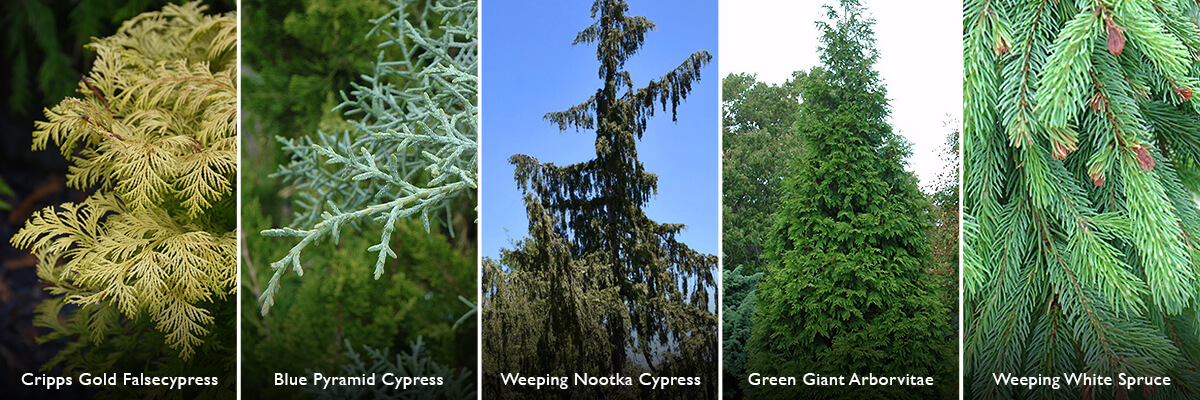
Evergreens
Coniferous evergreens are a winter landscaping staple. Not only do they provide height and a focal point to your space, but they look beautiful year-round. Fir, cedar, cypress, spruce, and juniper trees create a strong foundation for your space and will continue to grow taller and fuller each year.
Check out some of our favorite winter evergreens:
- Cripps Gold Falsecypress
- Blue Pyramid Cypress
- Weeping Nootka Cypress
- Green Giant Arborvitae
- Weeping White Spruce
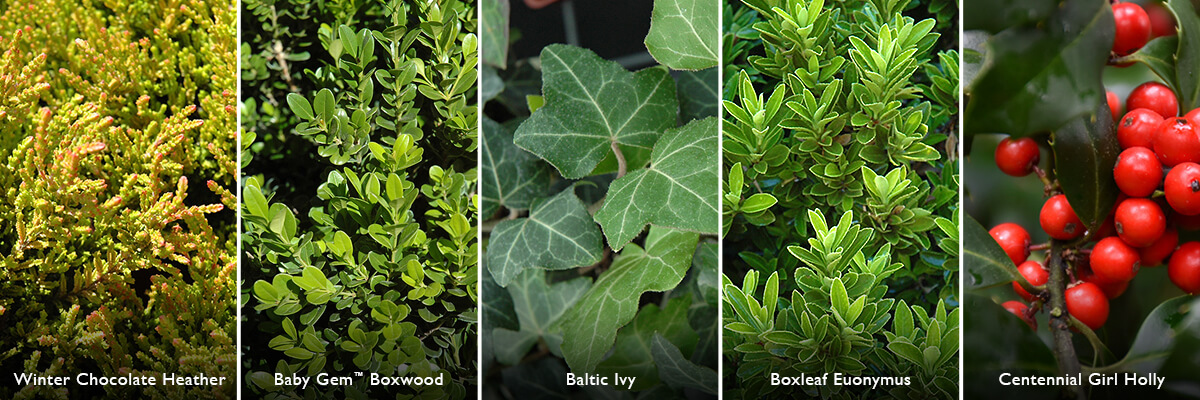
Bushes and Shrubs
Bushes and shrubs will also keep your landscape looking fresh and full in the winter months. These winter garden plants are low maintenance and perfectly frame front doors and windows. Make sure to keep bushes and shrubs well-trimmed in the winter to add order and structure to your garden.
Try these shrubs for a little added greenery:
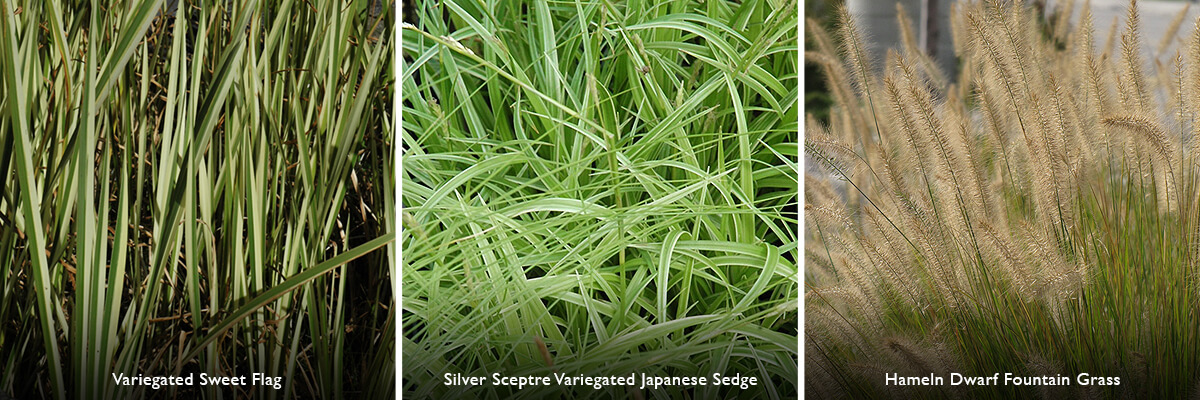
Ornamental Grasses
Ornamental grasses and grass-like plants provide unique texture and height to your winter landscaping. These plants are hardy and supply shelter and food, making them ideal for attracting birds and other winter wildlife to your garden.
Explore these grasses for added garden texture:

Perennials
Perennials are staple winter garden plants that will continue to bring joy year after year. Varieties of pansy, dogwood, and viburnum will bloom or produce berries into the late fall, and some will even persist through winter. Come spring, they bring vibrant blossoms just like the year before.
Add color to your garden with these perennial picks:
Winter Garden Plant Care
Clearing Snow
Just like your car, snow should be cleared off of your perennials and shrubs. Carefully lift large blocks of ice and snow off of plants with a shovel, and then use a gloved hand to gently brush away residual snow. Cold branches can be especially brittle, so taking time and care now will result in fuller, healthier plants in the spring.
Road and Sidewalk Salt
If you’ve ever had a perennial near a road or walkway not return in the spring, it’s possible that it was because of excess salting in the winter. Plant only the hardiest trees and bushes near the curb, where snow will be piled heavily and excess salt will spray.
When salting walks, only apply as much as you need, and consider using a calcium chloride salt near your plants. Calcium chloride is slightly more expensive than the more common sodium chloride salt, but it will not harm plants, vehicles, or concrete.
Pruning and Trimming
Early winter is also the perfect time to prune and trim your trees and other plants so that they will flourish in the spring. Once trees have lost their leaves, it’s easier to identify branches that are damaged or diseased. Removing them before the cold sets in will allow the trees to focus their energy on growing strong, healthy branches in the spring.
Winter is also the season when well-manicured shrubs shine. Trimming bushes and shrubs geometrically will help your landscape appear orderly through the greyest winter days, and will also provide a flat surface for snow to land on for that idyllic winter look.
Beyond Plants: Unique Winter Landscaping Ideas
While there are a variety of stunning winter garden plants to choose from, no landscape is complete without a few unique hardscaping elements. Whether you have existing hardscaping in need of a few decorations, or are planning a late fall installation for new pieces, follow these winter landscaping tips to build the perfect winter wonderland.
Maintain Your Hardscaping
Hardscaping provides your landscape with a strong base to build upon. If you’re looking to add new hardscaping before the winter, you’ll likely need to hurry and get started before the ground freezes. If your existing hardscaping is feeling drab, consider scheduling a power wash, or start dreaming up changes to make in the spring.
Add Holiday Decorations
Holiday decorations can provide color and whimsy on even the coldest days. Find a decoration style that reflects the style of your home and interior decorating, as well as your family’s personality. Once you have the interior of your house in the holiday spirit, decorate your landscape as an extension of your indoor decorations for a cohesive look. Extend your decorations all the way to the street or entrance to polish off the look.
Looking for holiday decorations on a budget? Add to your existing hardscaping and outdoor elements rather than completely replacing them.
These simple additions can transform your outdoor space:
- Add sprigs of greenery to bird feeder posts and lighting fixtures
- Include berries and pinecones in year-round wreaths
- Add colored bows to planters
- Stack firewood beside existing porch decor
- Add white or colored lights to fences, railings, statues, and more
By building on top of your year-round fixtures, you will save money, and also reduce the amount of storage space you need for the rest of the year.
Attract Birds and Wildlife
Birds are a unique way to bring color to your home and garden in the winter months. Perennials and ornamental grasses will provide shelter for birds , so be sure not to trim them back too short. Many grasses also produce seeds for birds to eat.
Providing food and water sources can also be a great way to encourage birds to visit your yard. Basic hanging feeders will do the trick, and opting for suet cakes or suet mix over standard bulk birdseed can help attract colorful songbirds.
Water sources are also hard for birds to come by in the colder months, so providing a small birdbath in a sunny area is ideal. Birding experts suggest adding sticks or stones to the water to encourage drinking and discourage bathing in the cold weather, which can be dangerous for birds.
Plan Ahead for Next Year
Keep a Plant Journal
Keeping your garden beautiful all year long is a lot of work, and it can be difficult to remember what worked year after year. Start a plant journal to help you plan and track which plants were successful, where they thrived, and what you want to do next year. It will also help you get excited about your spring planting and get you through the cold winter months!
Do Your Spring Research Now
Have you been dreaming of a new vegetable garden? Maybe you want to expand your existing beds or add a new stone walkway? Now is the time to plan and budget for next year’s spring and summer garden. You can use our plant finder to find the perfect plants for your space, or stop by your local Home & Garden center to get advice from our experts.
Need a little help with your winter landscaping? Contact your local Home & Garden Center to speak with our in-store experts and transform your space for the winter months.
